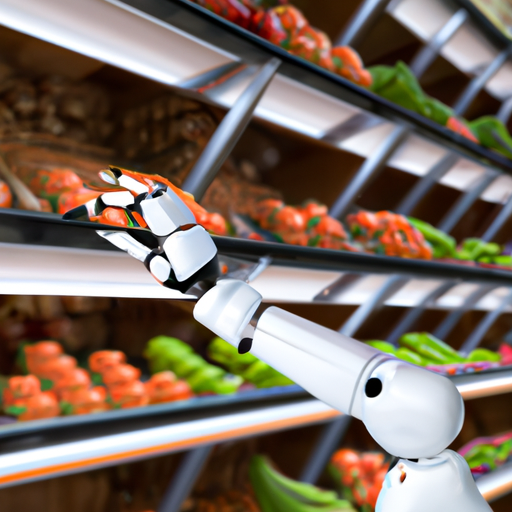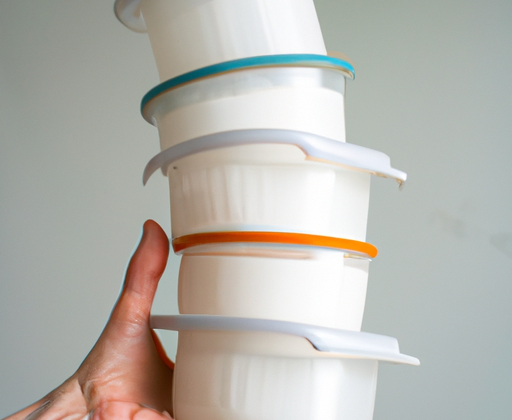The Whole Shebang: An Introduction to Shelf Life and Technology
Yo, foodie fam! Today, we’re gonna talk about something real important: shelf life. Now, I know what you’re thinking, “ugh, bo-ring.” But hear me out, cause this is some crucial stuff. Basically, shelf life refers to how long a food or beverage can stay fresh and safe for consumption before it spoils or goes bad. And let me tell you, with all the tech out there, we’re extending the life of our favorite eats and drinks like never before! But first, let’s dish on what this tech is all about.
By the way, if you wanna read up on how this tech is making our food more sustainable, check out this article I found. Anyway, back to the subject at hand. Get ready to have your mind blown, cause the tech behind extending shelf life is seriously cool.
HOW NEW TECH IS MAKIN’ OUR FOOD LAST LONGER
Yo, peeps! Let’s face it – shelf life is crucial when it comes to our food products. So, what if we told you that new food technology could help extend that shelf life and keep your edibles fresher for longer? Here are some wicked smart ways that technologists are makin’ it happen:
MODIFIED ATMOSPHERE PACKAGING: This is an amazing technology that involves replacing the air in food packaging with a mixture of gases that help maintain the freshness and quality of the product. By regulating the oxygen and carbon dioxide inside the package, the growth of bacteria, fungi and mold are slowed down. Plus, it helps keep the flavor and color intact. How rad is that?
EDIBLE COATINGS AND FILMS: Yes, you heard it right, EDIBLE. Coatings and films made from natural ingredients such as proteins, carbohydrates, and lipids are used to protect food from contamination and spoilage. These coatings and films create a barrier that prevents oxygen and moisture from entering or leaving the product, keeping it fresh and reducing the risk of spoilage. Eat your heart out!
HIGH PRESSURE PROCESSING: This technology uses high pressure to inactivate microorganisms that cause spoilage and food-borne illness. By reducing the risk of contamination, it extends the shelf life of the product. Additionally, this process helps retain the product’s nutritional value while preserving its taste and texture. Believe it or not, this can actually make your food taste better.
Now, can you imagine the benefits of these amazing technologies? Longer shelf life means less food waste, less money spent on buying new food, and ultimately better food security for everyone. These technologies also have environmental benefits by reducing food waste, emissions during transportation, and the need for preservatives. But, as always, there are challenges associated with anything new. Extended shelf life can mean higher costs for production, regulatory standards and consumer acceptance. However, the advantages seem to be outweighing the challenges, and we hope to see more of these technologies being used globally. In conclusion, these technologies might seem far out, but they’re the way of the future, man. They can help reduce food waste, improve food security and help the environment all while making our food last longer. Now that’s something to raise a glass of milk to!
Benefits of Extended Shelf Life
Hey folks, there are a lot of great benefits to extended shelf life technology that you may not have considered. For one, it reduces food waste and helps with sustainability efforts. Think about all the food that gets thrown away because it spoiled before it could be eaten. With extended shelf life, we can keep food fresh for longer and reduce waste.

Another benefit is the convenience it provides. You can buy more food at once and not have to worry about it going bad quickly. This saves time and money by reducing the frequency of grocery store visits. Plus, you don’t have to worry as much about buying produce that’s already at its peak freshness, since it will last longer in your fridge.
Extended shelf life technology also allows for greater flexibility in shipping and transport. It’s easier to get fresh food to places that are further away, and it can extend the shelf life of foods that wouldn’t normally have a long lifespan. This ultimately leads to a wider variety of food options available to consumers.
One more benefit of extended shelf life is that it can make certain foods more accessible to people in food deserts or areas without easy access to fresh produce. With longer shelf lives, these foods can be stocked in stores and made available in areas where they might not have been before.
All in all, extended shelf life technology has a lot of amazing benefits. It reduces waste, provides convenience, allows for greater flexibility in transportation and ultimately makes more food options available to consumers. It’s definitely something to consider when thinking about the future of food technology!
Warning: Extended Shelf Life Comes with its Challenges
As a foodie, I love to experiment with new and exotic ingredients. There is nothing more satisfying than a delicious, fresh meal. Unfortunately, fresh produce often does not last very long, and most of us cannot buy fresh food every day. That’s where technology comes in. It can extend the shelf life of food, keeping it fresh for longer. However, with extended shelf life come some challenges that many people are not aware of.
First of all, there is the issue of health. While extended shelf life can prevent food waste, it can also put consumers at risk. Some naturally occurring bacteria in food products can cause foodborne illnesses. If food stays on the shelf for too long, those bacteria can multiply to dangerous levels. Therefore, it is essential to ensure that all food has been treated according to strict safety protocols.
Secondly, in many cases, extending the shelf life of food products requires additives or preservatives. While these are often considered safe and are regulated by the FDA, some people have sensitivities or intolerances to certain substances. Additionally, some consumers prefer to avoid these additives altogether, leading to a smaller market for extended shelf life products. This, in turn, can lead to a lower profit margin for companies that specialize in extending shelf life.
In conclusion, while extending the shelf life of food is a valuable way to prevent food waste and provide consumers with fresh products, it comes with its own set of challenges. Companies must be vigilant about health and safety concerns and must be sensitive to the preferences of consumers who may want to avoid additives and preservatives. As a consumer, it is essential to be aware of these challenges and to carefully read labels and ingredient lists before making a purchase.
Wrapping Up – So, What Can We Conclude?
Well, folks, after diving deep into the technology behind extending shelf life and its benefits and challenges, it’s safe to say that we’re on the verge of a breakthrough in food preservation. From modified atmosphere packaging to high-pressure processing, the innovation in this field of study is truly fascinating. The perks of longer shelf life are enormous. As consumers, we can now enjoy fruits and veggies that have a longer shelf life and are fresher, tastier, and healthier. We’ll see a decrease in food waste, which is great for the environment, and we’ll have access to affordable and convenient foods year-round. That said, we can’t ignore the challenges that come with this innovation. There are concerns regarding food safety and nutrition, and the high cost of the technology may pose a challenge for small and medium-sized businesses. Additionally, some consumers may not perceive these products as “natural” or “organic.” In conclusion, food technology has come a long way, and the future looks promising for extending shelf life. However, it’s up to us as consumers to educate ourselves on the benefits and potential risks associated with these products. By doing so, we’ll be able to appreciate the convenience and longevity that technology can offer us.

